Lorenzo Marabini © 2022 E' vietata qualsiasi riproduzione delle immagini senza autorizzazione scritta di Lorenzo Marabini. All images of this website are copyrighted. They must not be reproduced without prior permission by Lorenzo Marabini. pittura contemporanea italiana, artisti contemporanei in Italia, contemporary artist, contemporay visual art, italian art - arte contemporanea - artisti contemporanei pittori - pittura italiana
Privacy Policy
Cookie Policy
| sHotlines |
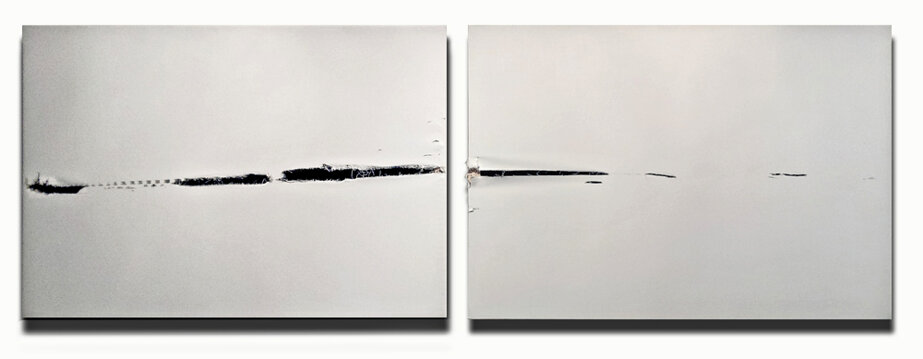
| sHOTLINES | gunshot on canvas (diptych) 80,7x27,5 in / 205 x 70 cm
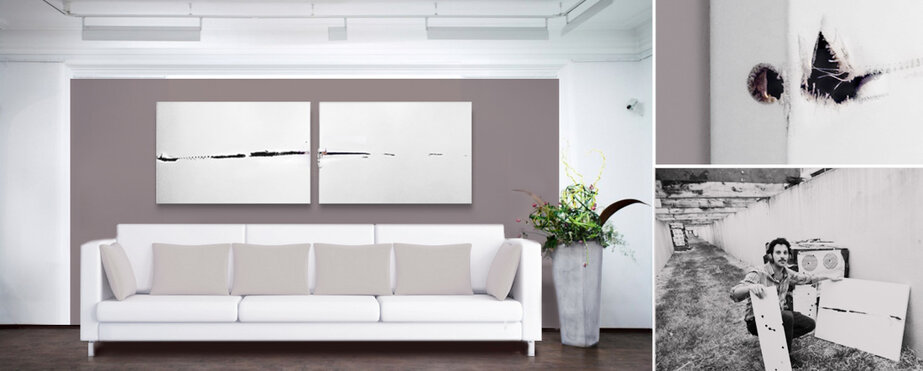
Gunshots |
by Ariberto Scolli
Cross the border of the matter, probing unexplored space and time pockets: these are centuries that artists respond to this natural (albeit potentially destructive) drive. Break, overcome, sublimate. What makes the difference is the result: a hole in the canvas is not enough to create Art. And I'm long gone and useless times of such provocations. But Lorenzo today Marabini identifies a sincere approach, clearly a consequence of a long and painful emotional journey. And just compare its gunshots on canvas with the previous figurative works to realize this. Marabini is therefore a conscious artist, who is confronted with the real and tends to to represent it subjectively, with reflections, even traumatic, of the own personal anxieties - sometimes violent - only after one painful choice. And this suffering, accepted with fatalism and a minimum of cynical complacency, fully reflected by his "shots on canvas". Yes: because he was the "killer"; it is Marabini who has shot the fatal blows that pierce the canvases. Desperate gestures, definitive, yet liberating. We do not completely agree with it same artist states in his explanatory notes. Of course, violence is inescapable and palpable in these works. But we feel an even more strong breath of life, a healthy and inexhaustible energy, which can not fail express themselves in the targeted yet explosive explosions that underlie the gunshots on canvas. And we like to think that the bullet acts more like a brush than it does not as a firearm: instantaneous, inexorable brushstrokes fatal, no longer correctable, and as such even more intense and deeply experienced. The ancient wisdom of Chinese engravers transferred to the modern, globalized, western culture. Here then that the microfractures of the warp of the canvas assume a value expressive. The depth and reverberations of the penetrations open to one
third dimension which reveals unsuspected chasms of conscience. But the brush-gun had already foreseen the slightest ripples before of the stroke of the blow. The sight of the gun becomes the look inner. Work conceived, projected and "focused" in the intimate of the artist a moment before pulling the trigger. And just one millisecond to fix it, inexorably, in eternity
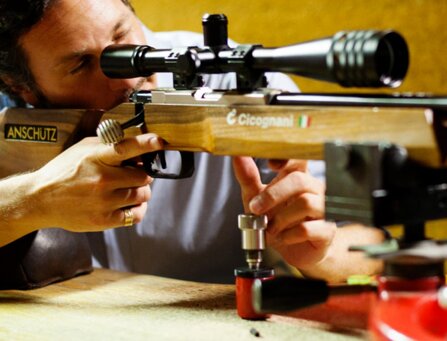

"sHotlines"
(gunshots on canvas) by Lorenzo Marabini
The series of sHotlines (gunshots on canvas) begins disfiguring the purity of the white canvas with real rifle shots. There canvas is a victim of violence. It becomes "sacrificial body" as a "sacred" tortured symbol, a relic, a warning. One trace remains surprising of what happened, a scar like that on the arm performer artist Chris Burden - who in the famous performance Shoot, 1971 got himself shot by an assistant. The sHotlines canvas preserves a sense of immanent danger and offers perception of the observer something like rapture and bewilderment ... something that perhaps it could be defined as the experience of the "sublime" in the world contemporary: the dangerous gesture becomes attractive; the tragedy it becomes spectacular and attracts us. Maybe we need it to feed this morbidity to obtain a cathartic effect, for counter our conscious fragility before a world without scruples ... Shoot on the canvas. Like William Burroughs. At the polygon. A front hole, if it leaves a significant imprint it becomes a small "work of art". To frame. But I shoot for the long, of smear, marks the path of the bullet, its real behavior, which in an instant is also capable of generating a trace, a "line hot ", a creative sign, as fascinating ... as tremendously destructive.
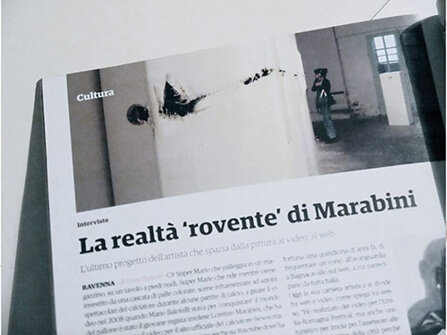

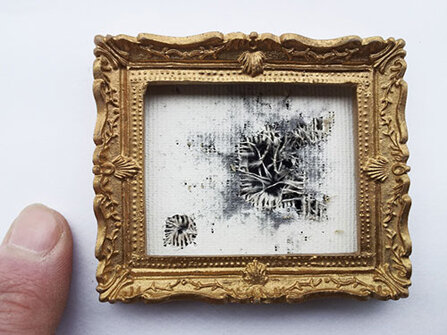
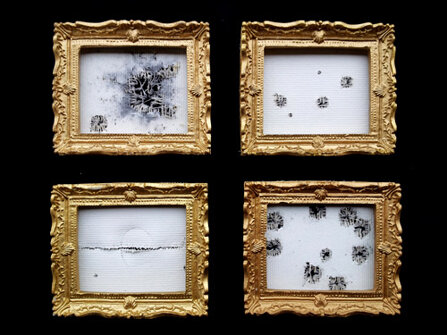
Lorenzo Marabini © 2025 All images of this website are copyrighted. They must not be reproduced without prior permission by Lorenzo Marabini. pittura contemporanea italiana, artisti contemporanei in Italia, contemporary artist, contemporay visual art, italian art - arte contemporanea - artisti contemporanei pittori - pittura italiana
Cookie Policy